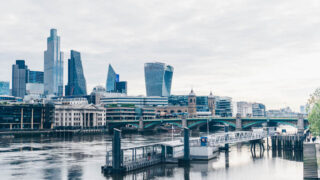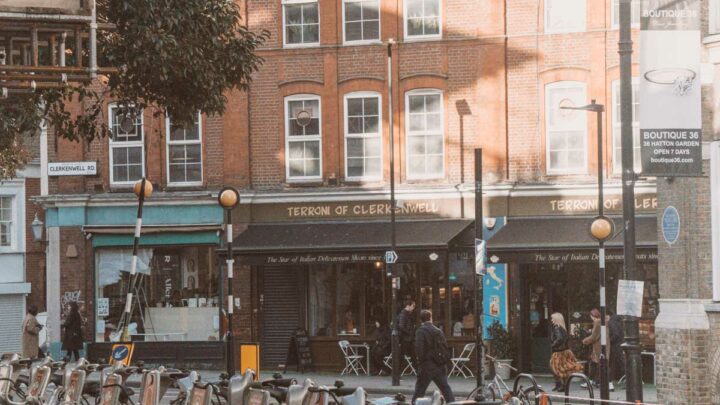
You’ve probably heard of Little Venice… and you’ve definitely heard of Chinatown… but have you heard of London’s Little Italy?
Packed with delicious restaurants, charming bars, and plenty of Italian culture, this area is one of the coolest (yet underrated) spots to hang out in the capital.
If you’re confused, don’t fret – we’ve got the low down on the where, what, and why, and we’ll be covering everything you need to know about Little Italy.
Ready to explore? Andiamo!
First Up, Where is it?
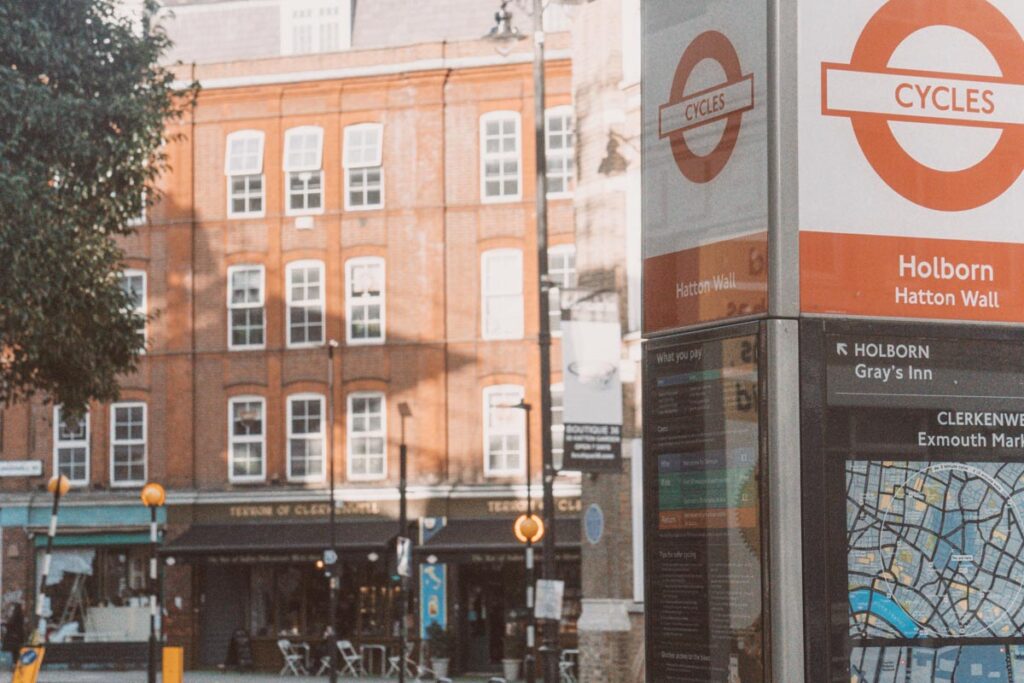
Little Italy, which you might have seen referred to as the Italian Hill or Italian Quarter, is an area in London based around Clerkenwell Road, Farringdon Road, and Roseberry Avenue.
It was once home to thousands of working class Italians – around 12,000 in 1895 according to the Italian Consulate – and although numbers have diminished more recently, a fair few remain.
The cultural remnants and stories of those Italians still echo through this part of central London today.
History of Little Italy
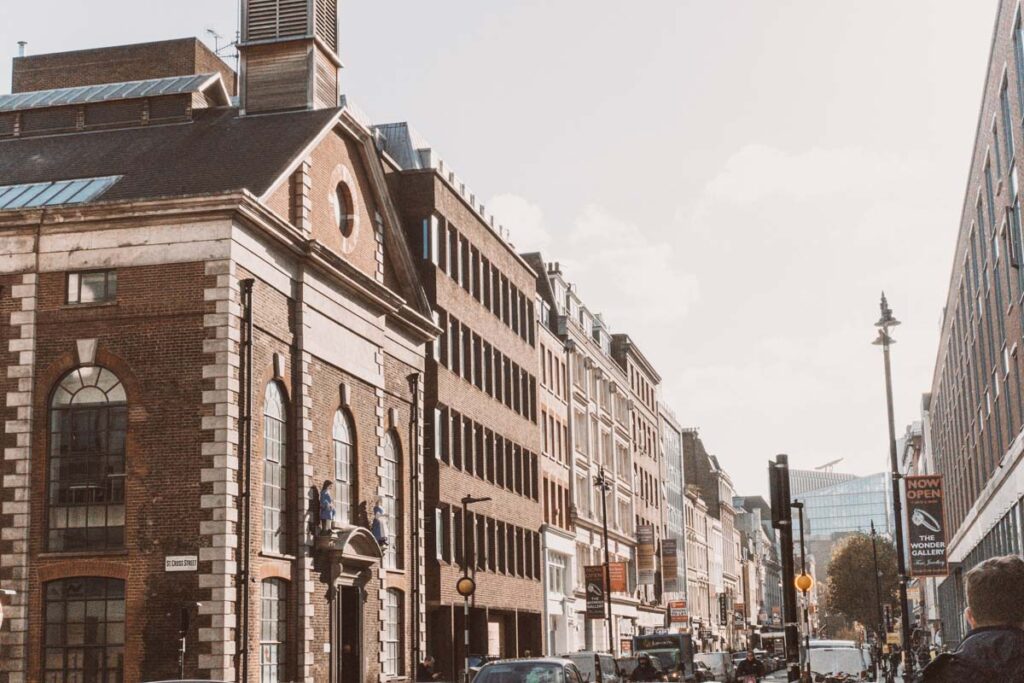
Italy is now known as a land of fine food, wine, art and architecture. The home of opera, cradle of the Renaissance, and home to a vast array of beautiful cities, beaches, and country villas.
So, what were Italians doing in London in the first place? There’s no one reason.
Some were skilled workers who came to London for the same reason talented people ever come to a big city; more opportunity to deploy their trade fruitfully.
Later waves were driven less by opportunism than by necessity, as parts of Italy – especially in the south of the country – suffered from deprivation.
The First Migrants
The first Italians to settle in the area arrived in the early 19th century from Northern Italy. Displaced by the Napoleonic wars of expansion, these first Italians chose what became Little Italy to settle as the area was seen as a centre of craftsmanship.
In the ensuing years, the Italian wars of unification saw a further wave of migrants arrive from Italy, with the Clerkenwell area chosen as the place to be due to the affordable accommodation in what was then considered a slum area.
The Italian community slowly grew, with a Catholic free school founded by an Italian priest in 1842. Forty years later, Giovanni Ortelli, a well-known and rich businessman, built a hospital for Italian speakers in Queen Square which was free to patients, thanks to funding from donations.
An Explosion of Culture
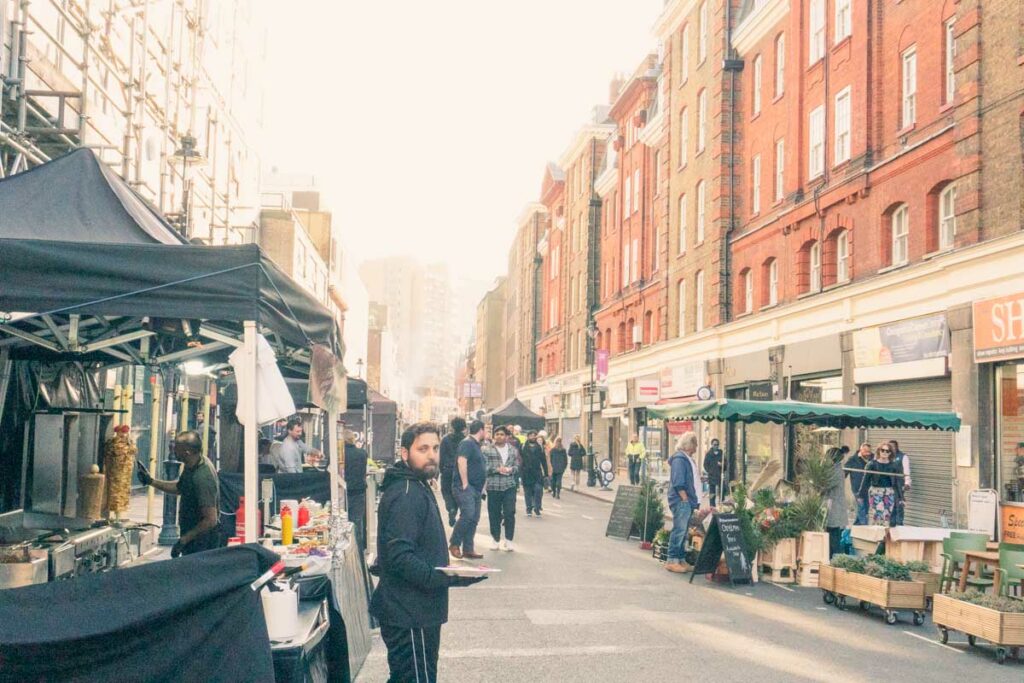
Many of the latter group came to join what is nowadays known as the ‘hospitality’ industry, or worked as domestic servants in the households of the wealthy.
Those who were able to save up, or were lucky to join those already established in the city, set up and ran small businesses to serve their own community and introduce Londoners to their culture.
Perhaps the most famous venture for Italian immigrants was selling Gelato, or ice-cream, a newly affordable food due to developments in cooling technology during the 19th century. In fact, it’s estimated that there were over 900 ice cream sellers in this area in the 1890s.
Lace wear and hat making – as memorialised in Virginia Woolf’s iconic London novel, Mrs Dalloway – were also professions associated with Italian migrants.
While Italy is now known as being the home of high fashion, these earlier indications of Italian prowess in the world of clothing were only recognised as being lower class jobs, employed in the service of upper class women in London.
A Colourful Past
Italians all around the world have long carried with them heavy cultural stereotypes – this is no different in our capital. In particular, for flamboyance, noise and (potentially) criminal activities.
The mafia stereotype is one that has haunted Italian immigrants the world over, and though it certainly unfairly tarnished the vast majority of migrants, there was some criminality among those in Little Italy.
Charles ‘Derby’ Sabini was just one of the gang leaders among the Italian migrants in London. To this day, it’s a well-known urban legend that all the ice cream vans in London are really a cover for mafioso activities.
Even as early as the 1850s, the area was associated with crime – Dickens’ Artful Dodger took Oliver Twist to visit Fagan, who lived on Roseberry Avenue that runs from Holborn to Clerkenwell.
London’s Political Ties
A colourful cast of characters emigrated from Italy to London at this time, perhaps the most famous being Giuseppe Mazzini, a key figure in the fight to unify Italy in the mid-19th century.
The Genoan was a radical, a proponent of social-democratic republicanism in a nation of fractured city states. He would go on to have an extraordinary political influence on major figures like Lloyd George, Gandhi, and David Ben-Gurion.
He sought refuge as a political exile in London, and a blue plaque can be found in Little Italy today, highlighting where he used to live during his years of exile.
In the 19th century, London wasn’t just the centre of the Industrial Revolution and the world’s largest empire – it was also a place of relative political tolerance, and many intellectuals and revolutionaries lived here.
Little Italy during WW2
Italy declared war on the United Kingdom on 11th June 1940, as Mussolini sought to feast on the remains of France as she fell to German invasion. This led to a huge increase in anti-Italian sentiment across the country, with riots in London against the Italian community.
Seen as a threat to national security, Churchill instructed the authorities to “collar the lot!” and Italian men between the ages of 17 and 60 were arrested and sent to internment camps. This included the likes of John Sperni, the mayor of St Pancras, and also saw an end to the power of the Sabini family’s dominance as the UK government requisitioned Italian businesses.
Things to do in Little Italy Today
Clerkenwell underwent some serious changes in the early 20th century – slum clearance, major infrastructure overhauls, property developments, and more general terrorising of blue-collar workers.
Much of the Italian influence in Little Italy we see today is less from the original immigrants in the 19th century but from new arrivals and those trying to sell a little slice of the Mediterranean lifestyle to Londoners whose appetite for all things Italian remains undimmed.
The area is also home to the Consulate General of Italy in London, and an Italian language driving school.
Delis & Restaurants
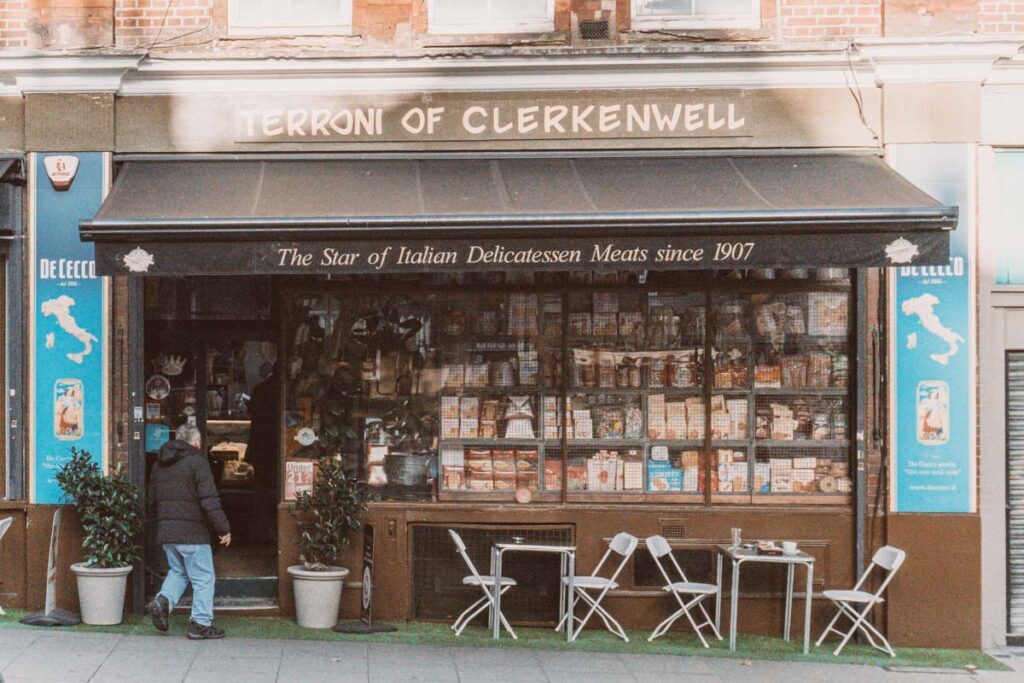
In particular, Londoners have recently gone mad for ‘aperitivo’ culture and today, as you can imagine, the best things to do in Little Italy revolve around food and drink.
Terroni’s
Terroni’s of Clerkenwell can boast of being the oldest Italian deli in Britain, dating its origins back to 1878, meaning that this stunning little eatery is approaching its 150th birthday.
Situated next door to St Peter’s Church in Holborn, Terroni is no longer owned by the Terroni family. After closing in 2003, a new version of Terroni was opened in 2012 combining the much-loved deli with another delicacy Italians are famed for, coffee.
Stacked with authentic Italians brands, such as De Cecco, Pozzi, Negroni, Perugina and enough different wines from Tuscany, Umbria, Puglia, and the Italian islands, one visit to Terroni’s will give you a massive hankering to book yourself a holiday.
Luca
Luca is a stunning Italian restaurant with a beautiful bottle-green facade that gives way to a dining experience that suddenly transports you to the gorgeous rolling hills of Tuscany. This up-market restaurant and bar uses the best seasonal ingredients for an authentic Italian dining experience.
Although on the pricey side, the food is worth every penny. Monkfish crudo with pickled beetroots, apple and horseradish buttermilk, Tagliatelle of rabbit and Celeriac croustade with castelluccio lentils. If that hasn’t made your mouth water, nothing will!
Santoré
If it’s authentic Italian pizza you’re after, Santoré on Exmouth Street is an unmissable experience. Its sprawling brown exterior covers some lovely street seating, where you can sit with your wood-fired pizza and glass of vino, watching the world go by just as you might in Naples or Bari.
It’s not just pizza; the menu caters to almost everything you could want from an affordable but good Italian restaurant. Pasta, fish, meat, and salads of all descriptions – if you manage to get beyond the incredible range of Antipasti on offer first.
The seafood risotto is perfect, as is the Tonnata pizza that comes without cheese. Trust us, it works!
St Peter’s Church
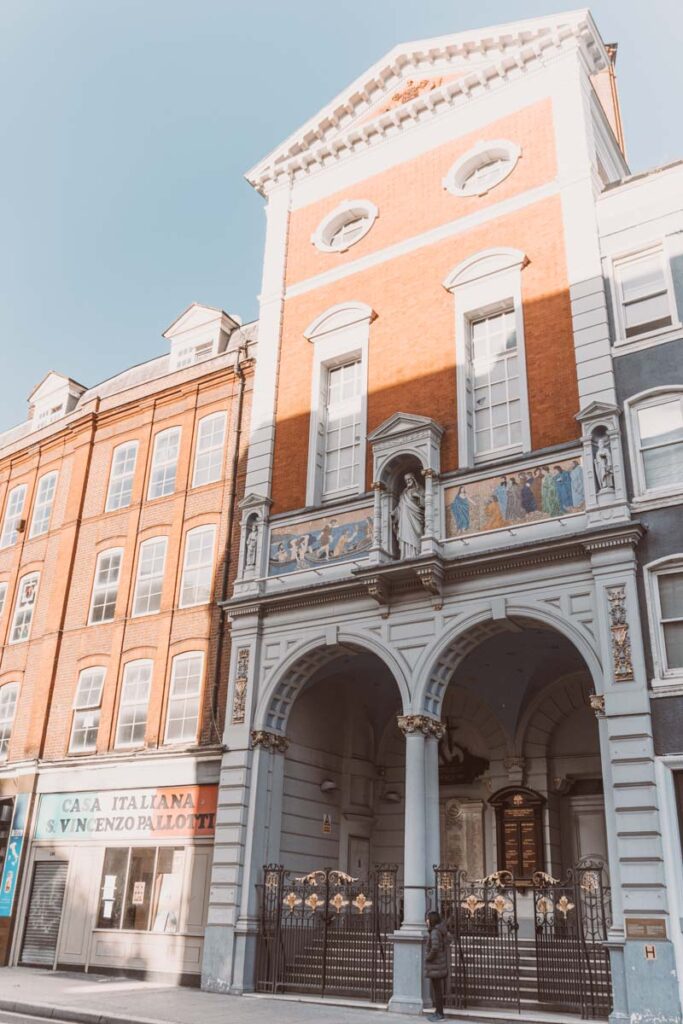
St Peter’s Church, commissioned in the mid-19th century, remains a community focal point. The procession of Our Lady of Mount Carmel is held annually on the first Sunday after the 16th July – decorated floats began to appear in the 1950s and have continued to this day.
The church is now a grade 2 listed building and initially met plenty of opposition before it was built. It took 18 years to build following the idea’s genesis from Vincenzo Palloti in 1845 to its opening on 16th April 1863. It was based on the Basilica San Crisogono in Rome, yet designed by Italian architect Sir John Miller-Bryson.
St Peter’s was the first Italian church outside Italy, while its bell, known as “The Steel Monster” is one of the largest in any Catholic church in the UK, weighing in at 3.5 tonnes. During World War II, displaced Polish Catholics were allowed to worship and hold mass in Polish.
In the church’s loggia are two wall memorials. The first is to commemorate the Italian Britons who lost their lives in World War I, and the other remembers the 446 Italians that were killed during the winking of the SS Arandora Star in 1940.

